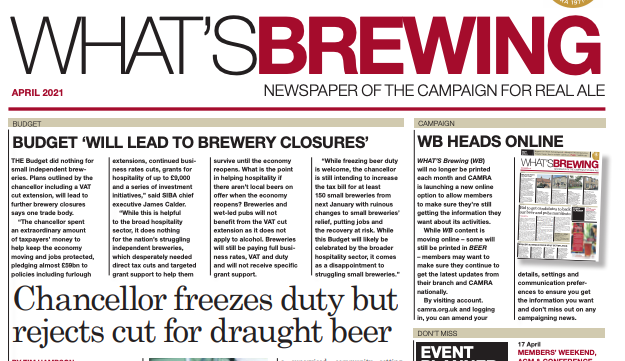Keeping balance in a bitter world
Audio Description
Login here to listen to the audio description

I’m conscious that I use the word “balance” a lot when I’m writing about beer. It’s not because I lack the ability to stand on two feet or am apt to fall down in a heap – I am the very model of moderation.
I’m referring to the importance of balancing the key ingredients that go into making a good pint – malt and hops. Too much malt and the beer will be sugary and sweet. Too many hops and the end result will be eye-popping bitterness.
All too often, I find balance lacking in a beer style, India Pale Ale, which since its resurrection in the late 1990s, has become a worldwide phenomenon.
The revival of the style came with the success of an IPA brewed by the Harpoon brewery in Boston, Massachusetts, and the recreation of a Bass Export IPA from the 1920s that was the keynote beer in a festival of pale ale at the celebrated White Horse pub in Parsons Green, London.
Both beers were superb, beautifully – here we go again – balanced between malt and hops. The Harpoon version was aided by the fact the founders of the brewery had toured Britain to discover how pale ale and IPA were brewed.
And then the beer world went bonkers. Today just about every country on the planet has a version of IPA. You would expect to find examples in Australia and New Zealand as a result of the links with the Old Country but it’s a shock to find them in France, Italy, Belgium, Scandinavia, China, Japan and South Africa. There’s even a brewery in India producing an IPA – the sincerest form of flattery.
Brewers in the United States, spurred by the success of Harpoon, have gone into a frenzy over IPA. There are more versions of the style there than you can wave the proverbial stick at.
American brewers love, as they say, to push the envelope and you will find Double and Triple versions with 10 and 12 per cent ABV. There’s West Coast IPA, which is hop-forward, New England IPA, with greater malt character due to the use, in a number of cases, of importing English yeast cultures, and now Midwest IPA, that attempts to blend the two coastal interpretations.
None of the above has much to do with the original IPAs brewed first in London and then most famously in Burton-upon-Trent in Victorian England.
When I told one American brewer I found his IPA just too bitter for comfort he retorted that his research proved that 19th-century versions had twice the amount of hops than those found in beers for domestic consumption. What he failed to appreciate was that the hops, along with alcohol, kept the beer in good condition on sea journeys lasting four or five months. During that time, the hops would have softened and lost a lot of their extreme bitterness.
To my mind, one of the best examples of a modern IPA is Proper Job from St Austell brewery in Cornwall. It’s won gold and silver in CAMRA’s bottle-conditioned beer awards, and the cask version (4.5 per cent) is one of Britain’s Top 10 ales.
It’s just been given a fresh look, with new pump clips and labels. The beer is a magnificent example of how to turn malt and hops into a perfect symphony of flavours.
It commemorates the work of the late St Austell head brewer Roger Ryman. Every year he visited the main hop-growing region of the US, the Yakima Valley in Washington State, to choose the best pick of the annual crop and he would then blend Cascade, Chinook and Willamette with England’s finest malting barley Maris Otter that is contract-grown for the brewery by handpicked Cornish farmers.
It was Roger’s great brewing skills that enabled him to blend the citrus and pine nature of the hops with the delicious notes of oatcake from the malt and produce a great drinking experience.
The bottled version of Proper Job (5.5 per cent) is the best-selling premium IPA in Britain, and the attractive new labelling should attract an even greater legion of admirers.
Meanwhile I have just received a package with samples of a new IPA brewed in this country that tells me it’s hazy – I prefer my beer clear – and that I will be impressed with its big citrus hit of grapefruit, mango and passion fruit. The label shows a cartoon hop with a scowling face.
I shall try to be balanced with my assessment…

 view archive
view archive
 view events
view events